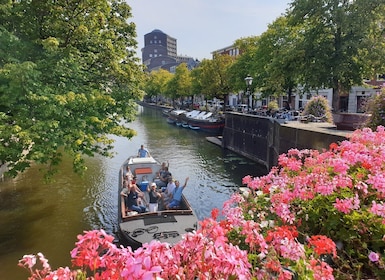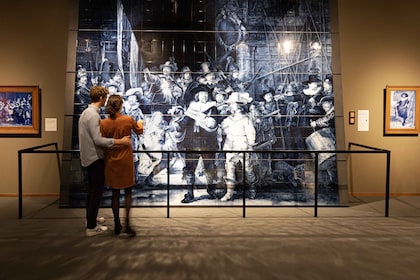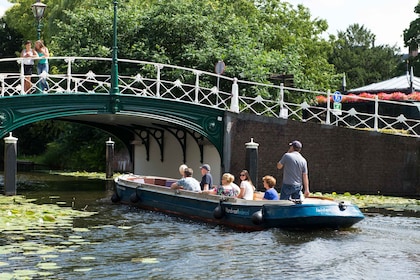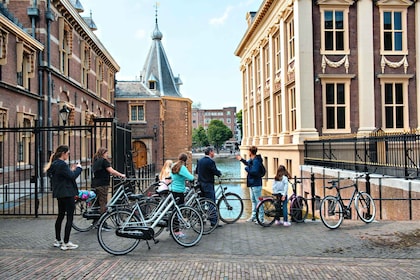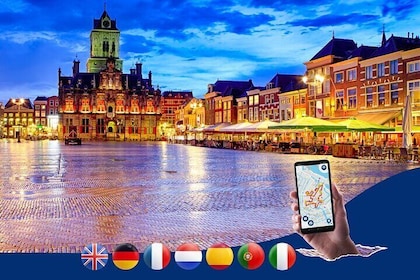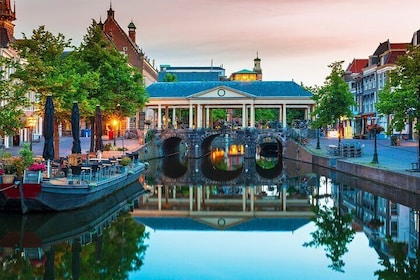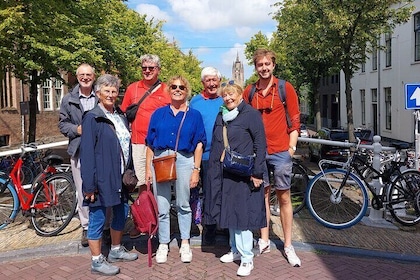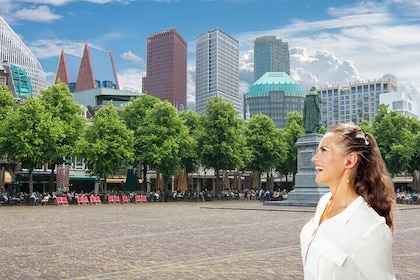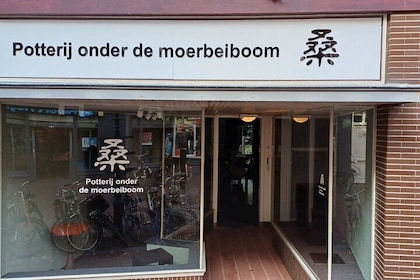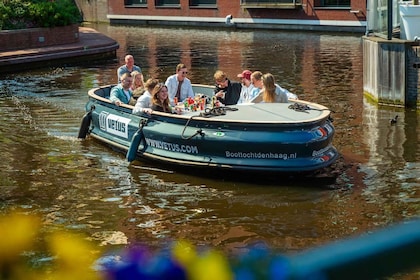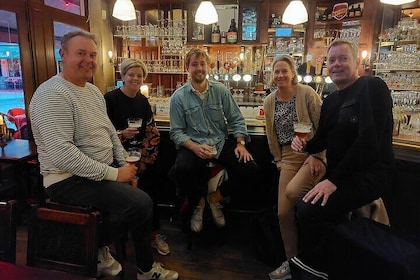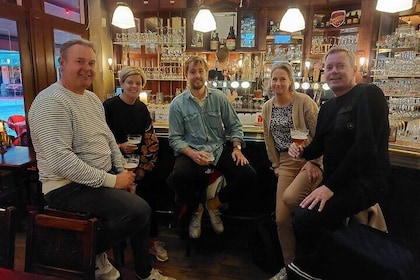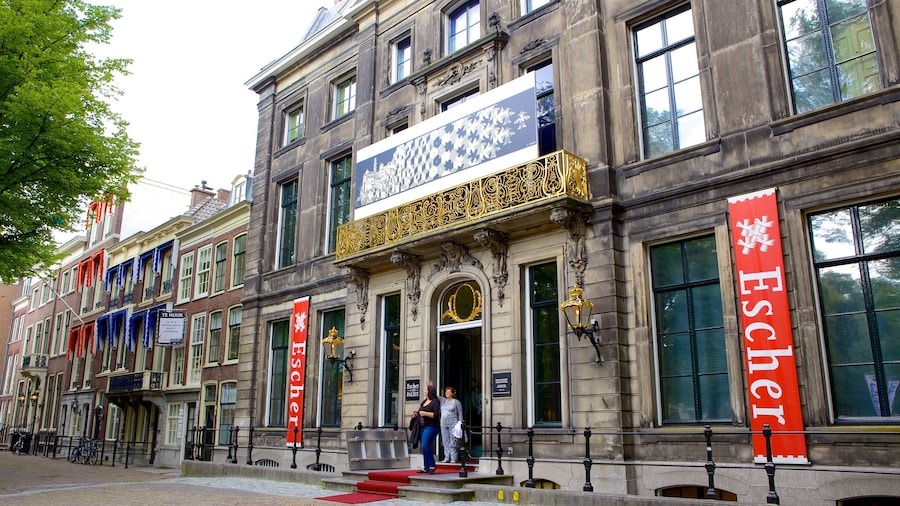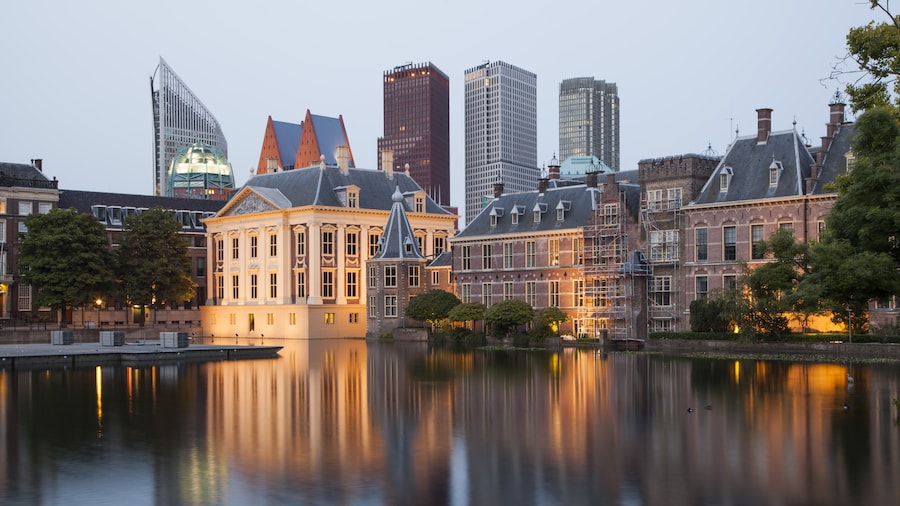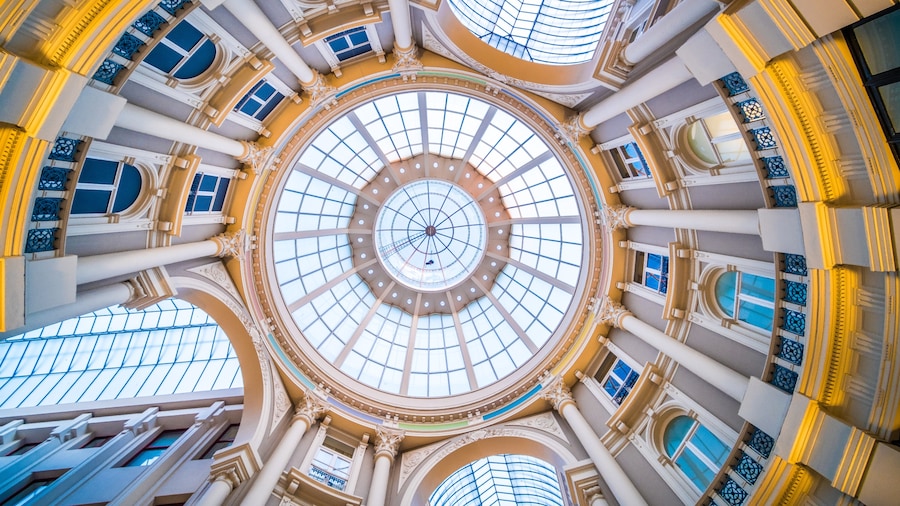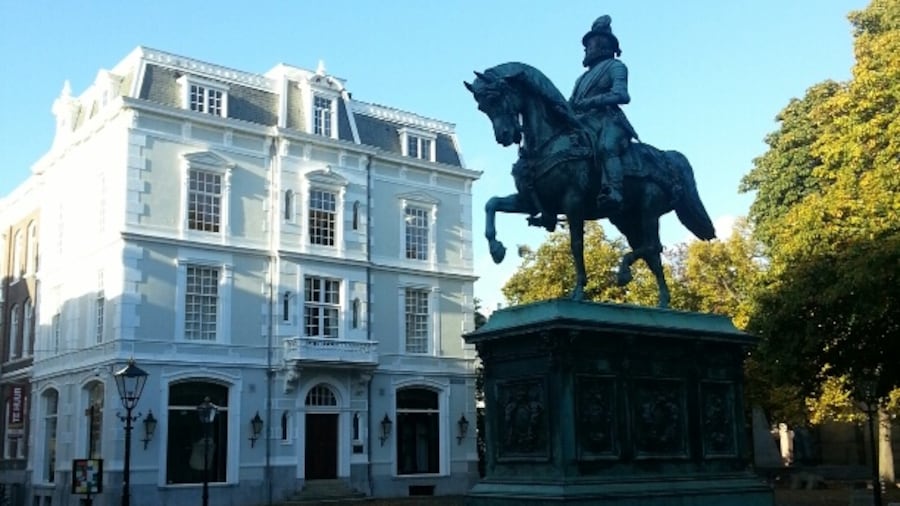This block of avenues is home to some of The Hague’s finest old residences, a historic church, the art of Escher, antique markets and typical Dutch narrow houses.
The trees lining this stately avenue in The Hague were planted so that it created a pedestrian-friendly, L-shaped enclosure. The connected lanes make up Lange Voorhout, home to a wealth of neoclassical architecture and Dutch culture. Old-style gilded lanterns also make this a picturesque place to visit after dark.
The first houses appeared on the Lange Voorhout about 600 years ago, but those were replaced by grand buildings in the 18th century. Royals and other wealthy citizens made their homes here and more recently embassies, museums and hotels took their place. The renovated mansions retain their original charm, so it is easy to imagine how Lange Voorhout must have appeared all those centuries ago.
Take a leisurely stroll along the long lanes lined with linden trees. This tongue-twister description actually inspired an old Dutch children’s rhyme and any Hagenees, as the locals are called, can recite it for you in their distinctive twang.
The eastern end of the avenue is marked by the Lange Voorhout Palace. Visit this former home of Queen Emma to see the Escher Museum. Dutchman M.C. Escher was born in 1898 and most of his mathematical prints, including Division Drawings, and other graphic art are showcased here.
Look for the Huis Huguetan, the ornate Supreme Court in a former royal palace. Adjoining it is what some say is “the narrowest house in The Hague.” It is actually just a door to a basement of the Supreme Court, placed there in the past to make the facade symmetric.
In early spring, see the garden beds filled with flowering crocuses. Twice a week, from spring to autumn, you can browse the antique and book market next to the U.S. Embassy. In summer, large art objects are temporarily placed on Lange Voorhout. In winter, warm up with Dutch-style coffee or food in the upscale cafés and restaurants overlooking the street.
Lange Voorhout is located close to the center of The Hague, northwest of the Binnenhof. If you come by bus or tram, alight at the Korte Voorhout stop.
